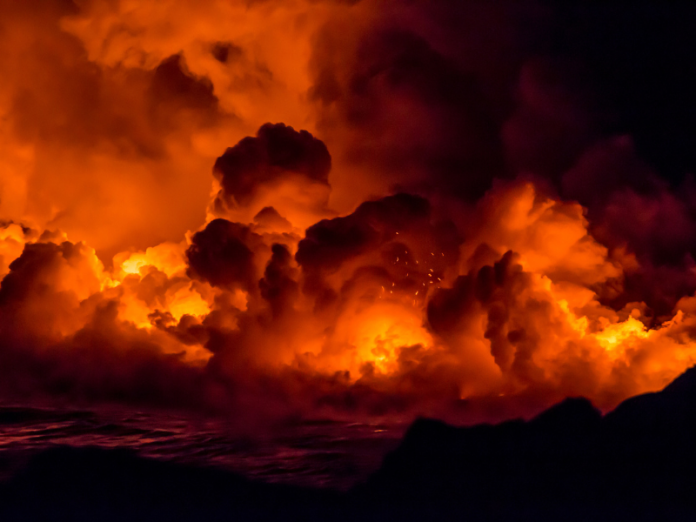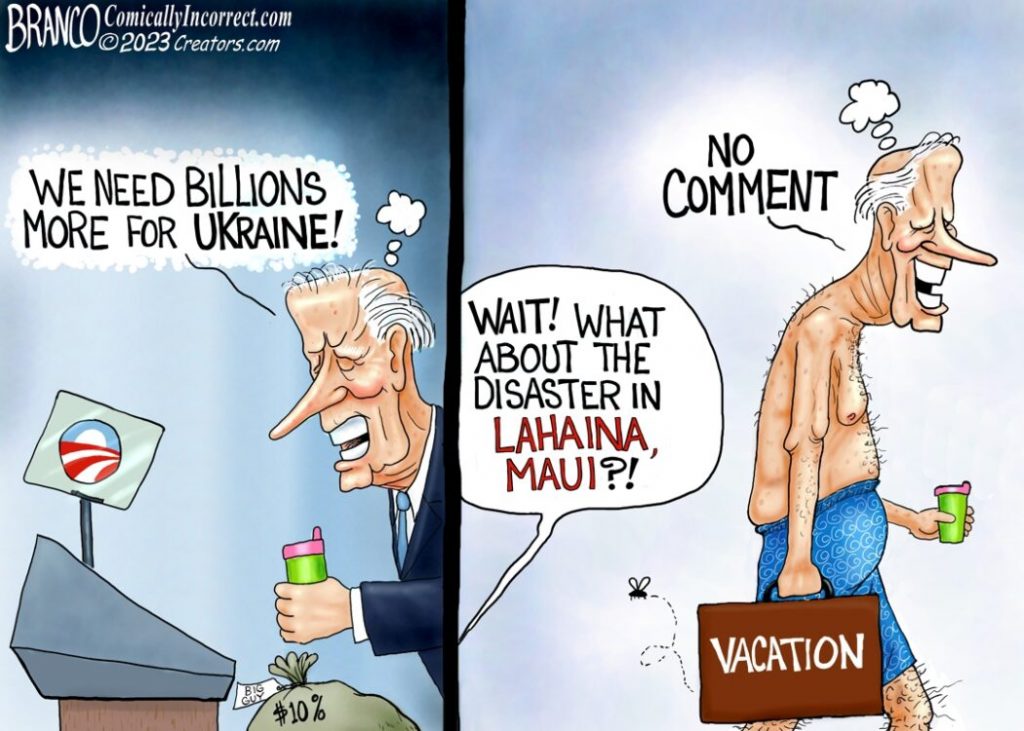YOU SHOULD SUBSCRIBE TO CLIMATE CHANGE WEEKLY.
IN THIS ISSUE:
- Nature, Human Error to Blame for Maui Wildfire Tragedy
- Podcast of the Week: Humans to Blame for Hawaii Fires, but Not How You Think
- Virginia and Pennsylvania Are Doing Well Amid Warming
- Coal Use Sets Record, Thwarting Efforts to Reduce Greenhouse Gas Emissions
- Video of the Week: Climate Lockdowns: The British Change Their Stance
- Climate Comedy
- Recommended Sites
Miss Anything at Heartland’s Climate Conference? No Problem.
Nature, Human Error to Blame for Maui Wildfire Tragedy

The mainstream media had a predictable kneejerk reaction to the horrific Maui wildfire, blaming climate change. Mainstream media outlets such as Bloomberg and the Los Angeles Times were quick to offer climate change as the reason for the Maui wildfire and its horrific consequences, even before the release of any details about the causes and full consequences of the fires, which are still being battled.
Shortly thereafter, however—within just a few hours in fact—a curious thing began to happen. Headlines stopped touting climate change as the boogeyman behind the fires. Other causes came to the fore. In fact, the news media actually started to investigate, perhaps because the death toll was so large and the images streaming out of Lahaina so grim and sobering. The stories began to change. News outlets began to downplay climate change, with some outlets hardly mentioning it at all. Instead, reports focused on the facts showing a confluence of weather events and human error resulted in the devastating Maui fire.
An ABC news story titled “Why climate change can’t be blamed entirely for the Maui wildfires” poured some cold water on the incipient hysteria: “We should not look to the Maui wildfires as a poster child of the link to climate change,” Daniel Swain, a climate scientist at the University of California, Los Angeles, said Friday in a YouTube stream.”
The Hawaiian Islands have wet and dry seasons, and it is currently the dry season on Maui. Lahaina, the city suffering the brunt of the wildfire’s wrath, sits on the side of the island that is naturally drier because of prevailing trade winds and surrounding mountains.
“The dry season begins in May, if not earlier. Rain virtually stops in June and July and temperatures rise, making it the most popular time for visitors. August and September can be particularly hot,” wrote DW in a responsible story titled “What caused Hawaii’s devastating wildfires?”
Fires require fuel, and big fires require large fuel loads. Maui had that in abundance, which allowed the wildfire to grow so quickly. This year’s dry season followed an unusually wet spring, which resulted in verdant growth of an invasive grass on the mountain slopes and valleys abutting Lahaina. Almost every story covering the wildfires mentions that after years of agricultural use, the land on the slopes and valleys surrounding Lahaina has been taken over by Guinea grass, a fast-growing, invasive plant, as noted in Watts Up With That, Smithsonian Magazine, The Washington Post, and other outlets.
During the wet season, Guinea grass can grow up to 10 cm per day and reach two meters in height. Instead of keeping the Guinea grass in check by regular mowing, or better still removing it and replacing it with fire-resistant native grasses and plants, Maui’s government allowed the Guinea grass to take over.
Abby Frazier, a climatologist at Clark University, told ABC News, “The main factor driving the fires involved the invasive grasses that cover huge parts of Hawaii, which are extremely flammable.”
Then there was Hurricane Dora, a category four storm that passed southwest of Hawaii, delivering strong winds of up to 62 miles per hour that drove the fires, once started, down the slopes with amazing speed.
Hot, dry conditions: check. A large load of dry fuel: check. High winds: check. Now all you need is an ignition source.
I don’t think they’ve determined what sparked the fire—whether arson, carelessness on someone’s part, or possibly powerlines downed by the high winds, or whether it was natural, such as a lightning strike. Whatever started the fire and unleashed the preexisting conditions that made it so powerful, the fault for the scope of the destruction and the death toll is almost entirely on Maui’s government. The New York Times and The Wall Street Journal, among other outlets, reported fire officials and the island’s electric utility had warned for more than a decade that Maui was at extreme risk of wildfires because of fuel build-up, the naturally arid environment during the dry season, and high winds, the very confluence of conditions responsible for the still-ongoing wildfires.
The Wall Street Journal reported,
Nearly a decade before a wildfire destroyed the coastal Maui town of Lahaina this week, killing at least 89 people, a report by Hawaiian fire researchers warned that the area was at extremely high risk of burning.
Another report, in 2020, tied fires to winds from a passing hurricane—similar to the ones that fanned the Lahaina blaze.
Even with all this, the Hawaiian government had established an extensive network of sirens across the island to warn people in case of an emergency, but the local government didn’t sound the alarm.
Yet local authorities said in the aftermath of this week’s devastation that though they knew wildfires were becoming more frequent in Hawaii, they weren’t prepared for one to roar through Lahaina.
CNN revealed a similar tale of the government ignoring this apparent, pressing threat of wildfires and thus being unprepared to fight them when they came:
When Hawaii officials released a report last year ranking the natural disasters most likely to threaten state residents, tsunamis, earthquakes, and volcanic hazards featured prominently. Near the bottom of a color-coded chart, the state emergency management agency described the risk of wildfires to human life with a single word: “low.”
One Maui County report on wildfire prevention from 2021 stated that while the number of acres consumed by wildfires had spiked, funds to prevent and mitigate them were “inadequate.” The report also stated that the county fire department’s strategic plan included “nothing about what can and should be done to prevent fires”—in what it called a “significant oversight.”
“Hawaii has a big wildfire problem. We are on par with the most fire-prone states in the western continental US,” Nani Barretto, an executive director for [the nonprofit Hawaii Wildfire Management Organization], said during a webinar in May. “The impacts of fire are broad and long-lasting. … There is a lot we can do to prevent them.”
The question is why the authorities weren’t prepared. In addition, one might reasonably ask why they didn’t trigger the warning sirens? Why was their response so inadequate?
Let’s hope real investigations take place, that the appropriate parties are identified and suffer the legal or political consequences of their actions or inaction, and that measures are taken to minimize the risk of such large, devastating wildfires striking Maui or other Hawaiian islands again in the future.
Claims by some reporters and science pundits to the contrary, climate change was not a significant factor in the Maui tragedy. The modest background warming did not cause the present dryness (Maui is in its historic dry season), nor did it cause poor land management, nor did it spark the fire, nor did it cause the winds from a hurricane, nor, most importantly, did it cause the government to ignore repeated warnings that such fires weren’t just possible but likely, to fail to prepare to fight such fires, or to decide not to set off the island-wide alarm system of air horns to warn people once the fires started.
Ecologist Jim Steele was right when he wrote, “The Maui fire would have devastated Lahaina in a colder or warmer climate. It would have devastated Lahaina in high or low CO2 concentrations.”
People blaming climate change for Maui’s raging fires and tragic, large loss of life are despicable: the worst kind of opportunists, grotesquely dancing on the smoldering bodies of those whose lives were lost, exploiting death to push a political agenda. What they are doing is sickening. No restriction on fossil-fuel emissions would have prevented this terrible event.
How many lives might have been saved if the government had cleared or removed the grasses and replaced them with native plants or followed the recommendations of its own fire authorities and treated wildfires as a major risk, certainly a more immediate one than climate change, and had it sounded the extensive alarm network to allow people time to escape? No one knows, but it is certainly far more than the zero lives it has saved in its expensive, futile efforts to fight climate change by restricting fossil-fuel use for energy and transportation.
Sources: ABC News; The Wall Street Journal; The Washington Post; DW; Watts Up With That; CNN
Get your Copy at Amazon TODAY!
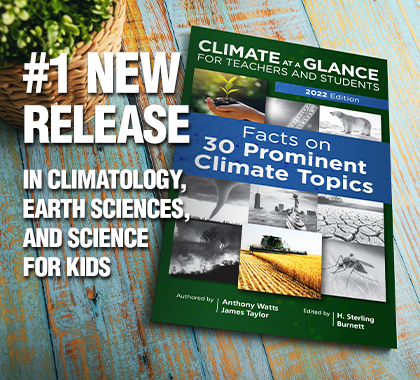
Podcast of the Week
The other day, Heartland’s H. Sterling Burnett was a guest on the John Steigerwald Show on AM1250 The Answer in Pittsburgh. Sterling was on at the top of the program to talk about how climate alarmists are blaming the devastating fires in Hawaii on man-made global warming. Sterling explains how humans are the most to blame for the devastation, but not for the reasons being spun by corporate media. Have a listen.
Subscribe to the Environment & Climate News podcast on Apple Podcasts, iHeart, Spotify or wherever you get your podcasts. And be sure to leave a positive review!
Virginia and Pennsylvania Are Doing Well Amid Warming
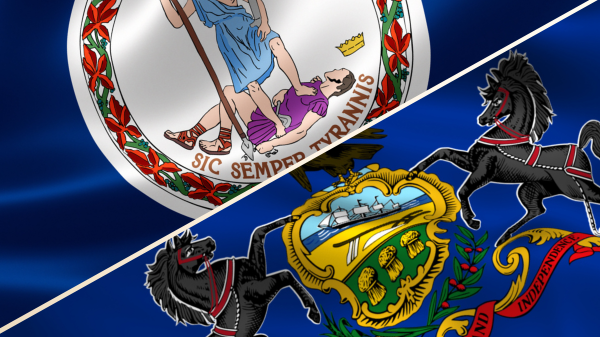
Two recent reports by the CO2 Coalition show Virginia and Pennsylvania are doing well amid the current period of modest climate change, not suffering from a climate crisis.
Examining the data, the CO2 Coalition finds Virginia has warmed by only a modest amount, less than half what was predicted by climate models. In addition, the analysts found Virginia has experienced a decline in heat waves and drought, no increase in severe weather or hurricanes, and crop growth is increasing.
What’s true of Virginia is true of Pennsylvania as well. Whereas Pennsylvania’s Department of Environmental Protection (DEP) has forecast increased flooding from the Ohio, Allegheny, and Susquehanna rivers, the size of flood crests in Pennsylvania over the past 100 years has declined even as average rainfall has increased.
As the Intergovernmental Panel on Climate Change observes, its scientists “can discern no connection between a modest increase in temperature and any change in flooding worldwide.”
As with Virginia, the CO2 Coalition presents data showing drought and heat waves have declined modestly during the recent period of modest warming, while agricultural productivity is up. The DEP predicted just the opposite to occur.
Sources: Climate-Science Press; CO2 Coalition
Heartland’s Must-read Climate Sites
Coal Use Sets Record, Thwarting Efforts to Reduce Greenhouse Gas Emissions
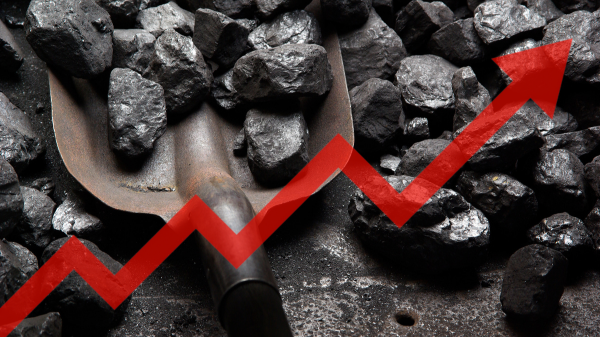
Global coal use reached a record high of 8.3 billion metric tons in 2022, reports Oil Price, citing International Energy Agency (IEA) data.
In 2022, coal provided approximately 36 percent of the world’s electricity generation, driven largely by growth in use in China and India. Globally, coal use grew by 3.3 percent in 2022, despite significant declines in much of Europe and the United States.
“[B]y region, coal demand fell faster than previously expected in the first half of this year in the United States and the European Union—by 24% and 16%, respectively,” the IEA said in a statement accompanying its Coal Market Update report. “However, demand from the two largest consumers, China and India, grew by over 5% during the first half, more than offsetting declines elsewhere.”
While climate alarmists have been pushing for a quick phase-out of coal use, China, India, and other developing countries have fought such efforts. Oil Price describes the situation:
At the 2021 United Nations COP26 climate summit in Glasgow, China and India imposed a last-minute intervention to water down the language in the conference Pact, so that the parties agreed to “phase down” rather than “phase out” coal.
“How can anyone expect that developing countries make promises about phasing out coal and fossil fuels subsidies,” said India’s environment minister Bhupender Yadav, in a speech during the conference proceedings. “Developing countries still have to deal with their poverty reduction agenda.”
Source: Oil Price
Video of the Week
President Joe Biden and the UN are likely to declare an “official” global climate emergency next week. All the signs are there. The chatter, and the behind the scenes maneuvering. The UN’s website now has a climate emergency page. Biden the other day stopped short, but when the new temperature numbers are issued on August 15by NOAA, that may be all the justification Biden needs. The “melting in Antarctica and the supposed subsequent sea level rise” will be another, and Lahaina in Maui burning to the ground will be cited as yet another.
If Biden declares a climate emergency, will climate lockdowns follow? History suggests “yes.” In a plausible scenario, we could see gas rationing, restrictions on electricity use, and limits on air travel. Enjoy steaks? Well, you can forget those.
Watch every episode of The Heartland Institute’s Climate Change Roundtable show LIVE every Friday at 1 p.m. ET.


